
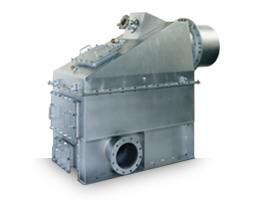
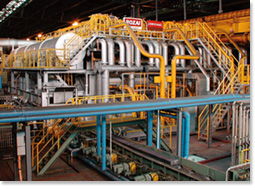
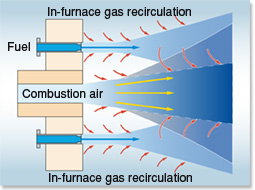
IRSH TYPE REGENERATIVE LOW NOx BURNER is composed of air register, primary gas nozzle, secondary gas nozzle, pilot burner and regenerative box. Combustion air passes through the regenerative box and the air thus preheated by the hot regenerative media (alumina ball).
The highly preheated combustion air will be then jet out at high velocities from the air register nozzle into the furnace. In times of low furnace temperature, the burner jets out fuel gas from the primary gas nozzle while jetting out highly preheated combustion air from the air nozzle of the air register. When the furnace temperature exceeds the ignition temperature, the burner stops gas supply to the primary gas nozzle and starts jetting out fuel gas from the secondary gas nozzle, which generates the gas recirculation through furnace inside thus enabling slow combustion. The burner is featuring low NOx technology of fuel direct injection model.
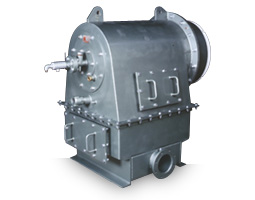
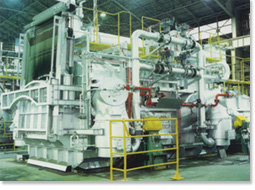
RSH TYPE REGENERATIVE LOW NOx BURNER is composed of air register, gas nozzle, burner tile and regenerative box, and has a simple structure.
Combustion air passes through the regenerative box and the air thus preheated by the hot regenerative media, alumina ball. The highly preheated combustion air will be then drawn into air register and divided into primary air and secondary air. Together with cooling air, at high velocity of 60-100 m/sec., fuel gas jets out from the air-cooled and insulated gas nozzle which located in the center of air register, then it will be mixed with primary air and the combustion starts. This high-speed jet stream for the optimum self-circulation of in-furnace atmosphere prevents the rise of flame temperature and stabilizes the flame. And also two-stage combustion by mixing with secondary air jetted out from the slit located in inner tile periphery realizes the suppression of maximum flame temperature and flame stability, and the combustion ends. As just described, the gas recirculation through furnace inside and the two-stage combustion method make it possible to lower the maximum flame temperature, thereby achieves the drastic suppression of NOx generation.
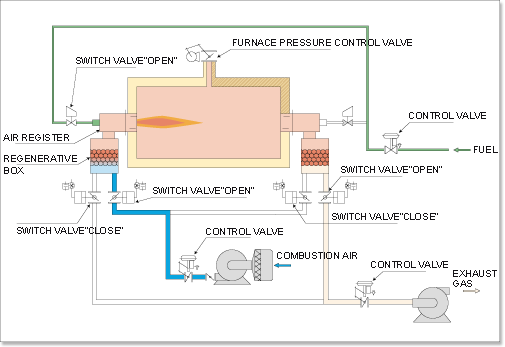
- Ultra High Temp. Ceramics Burning Kiln
Since thermal energy represents a major proportion of overall industrial product cost, the advanced level of combustion technology is a very important factor for the performance of thermal equipment. As part of efforts to improve the energy-saving technology for industrial furnaces and heating equipment, we have been developing and upgrading high-performance combustion equipment for many years. These efforts have led us to successfully manufacturing various types of special burners, in addition to general burners such as oil burners, gas burners, hot-air burners, low NOx burners, and meeting industry demands for high-efficiency combustion system by adopting latest combustion technology.